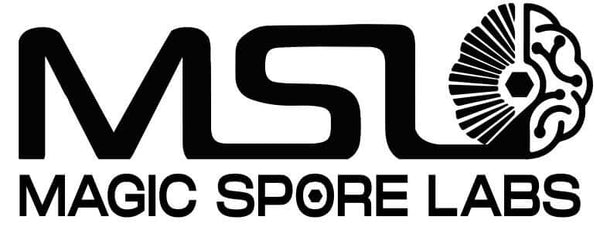
Fruiting Body vs Mycelium: Unlocking Functional Mushroom Benefits & Supplement Quality Truths
Share
In recent years, the wellness world has seen an explosion of interest in functional mushrooms. From lion’s mane capsules to reishi powders, these fungi have moved far beyond the kitchen. But as the shelves fill up with mushroom supplements, one debate keeps coming up: should you choose products made from the fruiting body or from mycelium?
It’s a question that can make or break supplement quality and, unfortunately, marketing claims can muddy the waters. Some brands promote “100% fruiting body” as the gold standard, while others argue that mycelium offers unique benefits often overlooked. This article explores the real differences between these two parts of the mushroom, breaks down nutrient and extraction factors, addresses common myths, and shows how to identify a high-quality product.
Understanding the Basics: Fruiting Body and Mycelium
The fruiting body is what most people picture when they think of a mushroom the cap, stem, and gills that appear above the surface and release spores. In the wild or in cultivation, a fruiting body forms only when conditions are just right. For example, researchers working with Psilocybe cubensis strains study golden teacher fruiting conditions, carefully managing temperature, humidity, and airflow to encourage those iconic caps to form.
Mycelium, by contrast, is the underground (or in-substrate) network of fine, thread-like structures called hyphae. Think of it as the mushroom’s root system: it absorbs nutrients, breaks down organic matter, and supports the eventual development of the fruiting body. Both are essential to the life cycle, but they are chemically distinct differences that carry over into supplement quality.

Nutrient and Compound Differences
The chemical makeup of the fruiting body and the mycelium can vary significantly. Fruiting bodies are often higher in certain active compounds especially beta-glucans, complex polysaccharides stored in the dense tissues of the cap and stem giving many fruiting body extracts a reputation for potency.
Mycelium isn’t an empty scaffold; it can contain its own beneficial compounds, including enzymes and secondary metabolites produced during research. The catch is that when mycelium is cultivated on grain (such as rice or oats), the final powder may include starch from that substrate, lowering the percentage of mushroom-derived actives unless the producer separates or extracts them effectively. In practice, fruiting bodies often yield higher concentrations of certain well-characterized compounds, while mycelium can contribute a different profile provided grain content doesn’t dominate.
Extraction and Supplement Production
Processing after harvest can influence quality as much as the mushroom part used. Fruiting body extracts typically begin with dried mushrooms that undergo hot water, alcohol, or dual extraction to concentrate desired compounds and remove much of the fibrous bulk. Mycelium-based supplements are commonly produced by studying mycelium on sterilized grain, allowing full colonization, and then drying and milling the mixture; some companies further extract and separate grain components, while others do not.
Different extraction methods matter for different compounds. Hot water extraction focuses on water-soluble components such as beta-glucans; alcohol extraction targets alcohol-soluble compounds such as certain triterpenes; and dual extraction combines both approaches to capture a broader spectrum. The method a brand uses should align with the compounds it claims to deliver.
Label Clarity and Quality Control
The supplement aisle can be confusing without a few guardrails. While ingredient lists may look straightforward, terms are sometimes used loosely. A quick label literacy check helps separate substance from spin.
- Fruiting body vs. mycelium clearly stated: Quality brands specify which part is used.
- Grain disclosure for mycelium: If researched on grain, does the label indicate whether it’s included or minimized?
- Standardized actives: Look for quantified beta-glucans or other target compounds rather than generic “mushroom powder” weights.
- Third-party testing: Independent lab verification supports claims about purity and potency.
Common Myths and Misconceptions
“Mycelium is just filler.” Not quite. Mycelium contains unique compounds that can complement fruiting body profiles; the issue is grain-heavy powders that dilute potency.
“Fruiting bodies are always superior.” They often carry higher levels of certain well-studied actives, but mycelium may provide different benefits depending on species and processing.
“Whole mushroom” always equals best. The term can mean fruiting body plus mycelium—or even include grain substrate. Without precise labeling, you can’t be sure what “whole” entails.

Choosing the Right Product for Your Goals
The better option depends on your goals, budget, and the specific mushroom species. Rather than defaulting to marketing slogans, align the supplement’s inputs and process with the results you want.
- Prioritizing beta-glucans: High-quality fruiting body extracts commonly deliver robust concentrations of these water-soluble polysaccharides.
- Seeking broader compound profiles: Mycelium-based products may contribute enzymes and metabolites from active research phases; look for minimized grain content.
- Full-spectrum balance: Some blends combine fruiting body and mycelium in intentional ratios for complementary coverage.
Whatever you choose, transparency and verification are non-negotiable. Brands that quantify actives, explain their extraction, and share lab results make it easier to buy confidently.
Industry Trends and Consumer Awareness
Rising demand for clarity is reshaping the mushroom supplement landscape. More companies are disclosing beta-glucan percentages, clarifying whether mycelium products are grain-free or minimally grain-based, and publishing independent lab reports. Some producers also optimize cultivation environments akin to the careful environmental dialing seen with golden teacher fruiting conditions so that research inputs support the intended compound profile. As shoppers get savvier, opaque products tend to lose ground to transparent, test-backed offerings.
Conclusion
The fruiting body vs. mycelium question isn’t as black-and-white as marketing suggests. Fruiting bodies frequently deliver higher concentrations of certain well-characterized compounds, while mycelium can contribute a distinct set of metabolites so long as grain doesn’t overshadow the actives. The smartest approach is to focus on clear labeling, suitable extraction, and independent verification. With those boxes checked, you can select products that align with your goals and make the most of what these remarkable fungi have to offer.
